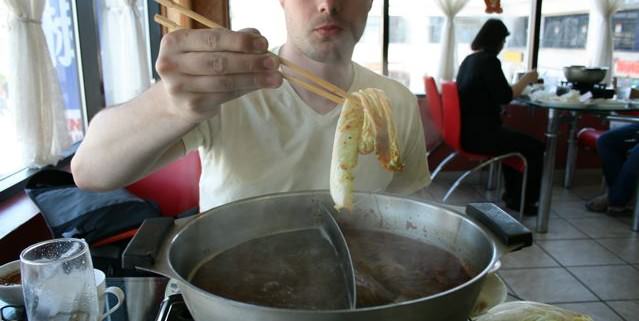Be Who You Want to Be: A Celebration of Restaurant Diversity
It is rare that a restaurant or bar experiences the confidence to just be itself. On this blog, we talk about how you can improve your sales methods, introduce more alcohol to your menu, or find and hire a good band. However, we have never coached you in how to be who you are—proudly, happily, unabashedly. Today’s post is in celebration of your restaurant, exactly as it is.
What is the feeling of your restaurant?
Last week, I went to the Chicago Brauhaus, in Lincoln Square.
It was fabulous.
The place didn’t have the best decor—it looked as if it had been decorated with care in the 1970s, and not redecorated since. There was a flower-patterned carpet, with tables and booths surrounding a small dance floor. A raised bandstand crowded one corner, with booths dotting the other corners. (At least, I’m 99% sure that that was the layout. I was focusing more on my liter of beer than on decorative details.)
The bandstand walls were decorated with old instruments, and the waitresses who walked smilingly from table to table were dressed in cute German uniforms that resembled a toned-down, black and white version of the St. Pauli Girl outfit. The food they served was German (meat, meat, meat), and I found myself thinking of my vegan friend, who would be grossed-out by the menu.
The Brauhaus’ band had a selection of synthesized keyboard songs underlying every crooned German tune (I assumed they were German oldies or perhaps folk tunes). The singer, an older man with white hair who took frequent cigarette breaks, was fond of yodeling into the mic at odd moments.
In short, there were a lot of things that the Brauhaus could have changed to become more modern and more trendy. Of course, they could have used some digital wine menus (who couldn’t use those things? They’re awesome!), but besides that, they could have updated the decor, added more fresh veggies to the menu, or added vegan items. They could have created some German fusion specials: “Wurst with Asian Schnitzl-Slaw” or “Smoked Westphalian Ham Panini Sliders”.
But they didn’t do any of these things. Instead, they stayed true to themselves, and kept their restaurant awesome. And for that, I’ll go back. And also for that, I highly recommend them—unless you’re vegan.
Does restaurant authenticity scare off customers?
Another night recently, I went to Ban Po Jung, a Korean restaurant in Chicago’s Albany Park. When I walked in, about half of the small, super-casual diner was filled with customers who were clearly Korean and some were speaking in Korean to the restaurant owners. All the non-Korean tables in the restaurant were empty tables. The television was on a Korean station, the wall decor was composed of over-saturated landscapes overlaid with Korean text, and the menu, of course, was all in Korean. It did have some English sections, though they were unhelpful at best. (Did I want the “spicy octopus” or the “bone soup” for my meal?)
In case you’re curious, I had both items and the “seafood pancake”. They were delicious and served with about a thousand little colorful side dishes that were tasty and mysterious.
During the course of my dinner, something clearly interesting came on the news, and the whole restaurant went silent as videos of riot scenes flashed across the screen, accompanied by a somber Korean voice over. When the phone rang, the owners unfailingly answered it in Korean.
Could Ban Po Jung make changes to attract a more varied clientele? Sure they could. They could get a website, translate their menu better, answer the phone in English, and, er, put their sign in English. But why should they? Their business is strong, so their authenticity isn’t scaring anyone away.
No one can copy unique
Remember that chain restaurants and bars, or bland, one-size-fits-all atmospheres are very easy to copy. Unique restaurants, though, can never be duplicated. You don’t always have to worry about improving your restaurant, or adding more to your menu, or even selling more craft beer—sometimes you just need to let your restaurant be true to itself.
Photo licensed by TheBittenWord.com
- Why Your Wine Menu Is Scaring Your Guests - February 27, 2015
- How to Host a Better Restaurant Week and Get More Customers - February 23, 2015
- Choosing Your Restaurant Wine Glass – 3 Approaches - February 16, 2015



